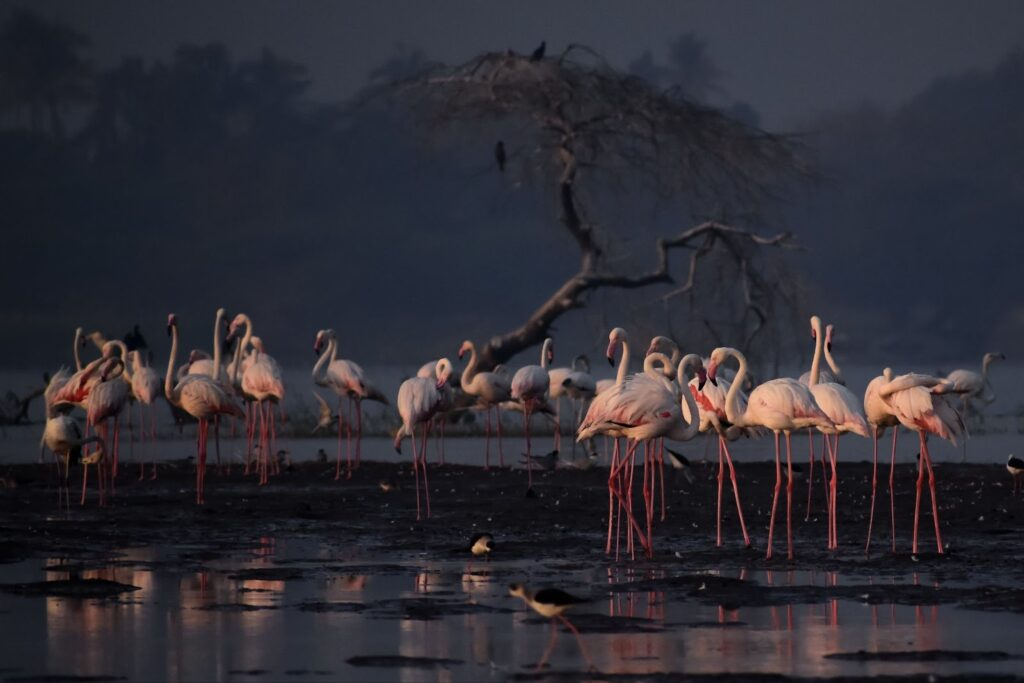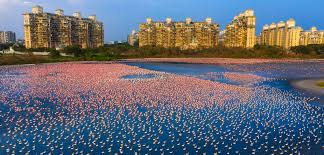Now Reading: Middle East Flamingos: Secret Habitats Finally Revealed!
-
01
Middle East Flamingos: Secret Habitats Finally Revealed!
Middle East Flamingos: Secret Habitats Finally Revealed!

Table of Contents
When people think of the Middle East, they often picture dry deserts, endless sand dunes, and blazing sunshine. But hidden within these harsh landscapes are surprising oases of life — wetlands, lagoons, and salt flats that are home to thousands of flamingos. These graceful pink birds, symbols of elegance and balance, have found a way to survive and even thrive across several Middle Eastern countries.
The Middle East provides key habitats for two major flamingo species: the Greater Flamingo (Phoenicopterus roseus) and, less commonly, the Lesser Flamingo (Phoeniconaias minor). These birds migrate, breed, and feed in a network of carefully balanced wetland systems that are under growing threat from human development, climate change, and pollution.
Flamingo Hotspots of the Middle East

United Arab Emirates: Al Wathba Wetland Reserve
One of the best-known flamingo habitats is the Al Wathba Wetland Reserve in Abu Dhabi, UAE. Originally a man-made water body, Al Wathba has evolved into a crucial stopover for flamingos. Over 4,000 flamingos have been recorded there during peak seasons, with some even breeding successfully. The reserve was declared a Ramsar Wetland of International Importance in 2013, highlighting its global ecological value.
Iran: Lake Urmia
Lake Urmia in northwestern Iran has long been one of the largest hypersaline lakes in the world, supporting flamingo populations for decades. Sadly, the lake’s size has shrunk dramatically due to water diversion, overuse, and drought. Despite this, flamingos still visit Lake Urmia to feed on brine shrimp and algae, showing their resilience but also the urgent need to protect these delicate ecosystems.
Saudi Arabia: Jubail and Al-Asfar Lake
In Saudi Arabia, the Jubail Marine Wildlife Sanctuary and Al-Asfar Lake near Al-Ahsa are popular flamingo habitats. These wetlands provide feeding grounds rich in small crustaceans and aquatic plants, which are essential for the birds’ vivid pink color. Saudi Arabia’s conservation authorities are working to monitor these areas as tourism and urbanization expand.
Bahrain: Tubli Bay
Tubli Bay is Bahrain’s most famous flamingo site. Here, Greater Flamingos gather in large flocks, wading through shallow waters to feed. However, the bay faces challenges from land reclamation and water pollution. Conservationists are sounding alarms to save this critical feeding and resting habitat before it is lost forever.
What Makes the Middle East Attractive for Flamingos?
Many might wonder why flamingos, known for their elegant poses in tropical settings, are drawn to the Middle East. The answer lies in the region’s unique wetlands. Saline lagoons, mudflats, and shallow lakes are rich in blue-green algae, brine shrimp, and other small crustaceans that flamingos love to eat. These foods not only nourish the birds but also provide the pigments that make their feathers so beautifully pink.
Additionally, the Middle East wetlands are usually calm, with fewer predators, making them ideal breeding and feeding grounds. Warm temperatures and a mix of fresh and saline water create perfect conditions for flamingos to thrive.
Challenges Facing Flamingo Habitats
While these habitats are remarkable, they are also fragile. Rapid urban growth, industrial projects, and tourism threaten the delicate balance of wetlands across the Middle East.
- Pollution from untreated wastewater and industrial runoff is poisoning some wetland areas.
- Climate change is leading to more droughts and unpredictable rainfall, reducing water levels in key flamingo breeding sites.
- Human disturbance, including illegal hunting and careless tourism, sometimes forces flamingos to abandon their nesting sites.
International organizations, local governments, and community groups have been working together to monitor, protect, and restore flamingo habitats. Ramsar sites and nature reserves are an important step in this direction, but experts say stricter enforcement and greater awareness are needed.
Conservation Success Stories
Despite these challenges, there is hope. The Middle East has seen some successful conservation projects.
- At Al Wathba in the UAE, flamingos have bred regularly since 1998, thanks to protective measures and careful water management.
- In Bahrain, community-driven projects have helped monitor flamingo flocks and raise awareness among locals about protecting Tubli Bay.
- Saudi Arabia’s wildlife authorities are expanding education programs to teach visitors about the importance of preserving wetland ecosystems.
Such efforts prove that people and nature can coexist, even in rapidly changing regions.
Why Flamingos Matter

Flamingos are more than just pretty birds. They are vital indicators of healthy wetland systems. If flamingos are doing well, it usually means the ecosystem is also thriving. Protecting their habitats helps protect countless other plants and animals, including fish, insects, and migratory birds.
Moreover, flamingos attract tourists and photographers from around the world, creating opportunities for eco-tourism. This can benefit local communities financially and motivate governments to invest more in nature conservation.
The Future of Flamingos in the Middle East
The future of flamingos in the Middle East depends on balancing development with ecological responsibility. As cities expand and infrastructure projects rise, wetland habitats must not be left behind.
Experts encourage stronger legal protections, investment in wastewater treatment, and better water management strategies. Educating schoolchildren, local communities, and tourists is also crucial. If more people understand the importance of wetlands, they will be more likely to protect them.
In a region often associated with deserts and oil wealth, the sight of graceful flamingos wading through shimmering pink and blue lagoons is a powerful reminder: nature can survive, and even flourish, with the right care.
The next time you think of the Middle East, remember that it is also home to these incredible birds — an elegant symbol of resilience and beauty. With continued protection and awareness, flamingos will continue to grace these hidden gems of the Middle East for generations to come.
Read More:- Deyaar’s Latest Announcement Shakes Up the UAE Property Market






















